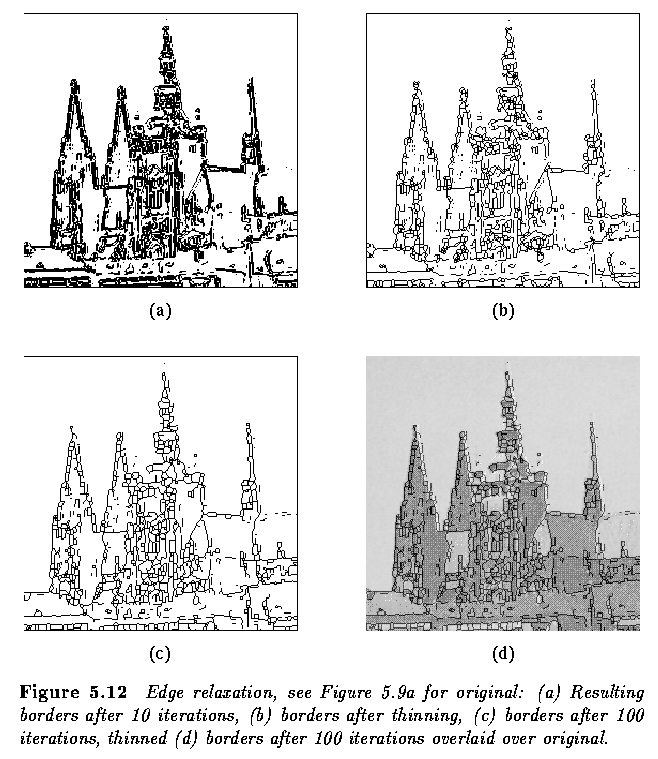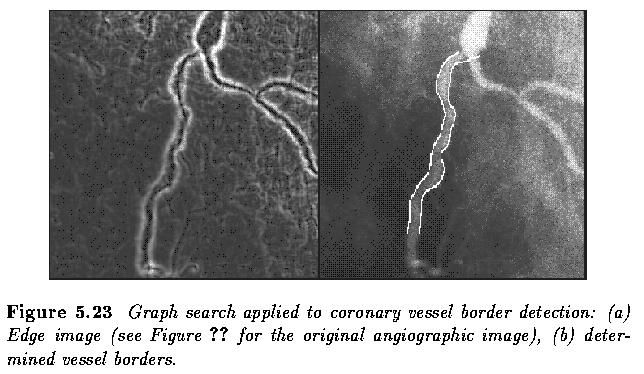Segmentation: Edge-based
- Edge-based segmentation represents a large group of methods based on information about edges in the image
- Edge-based segmentations rely on edges found in an image by edge detecting operators -- these edges mark image locations of discontinuities in gray level, color, texture, etc.
- Image resulting from edge detection cannot be used as a segmentation result. ---> Supplementary processing steps must follow to combine edges into edge chains that correspond better with borders in the image.
- The final aim is to reach at least a partial segmentation -- that is, to group local edges into an image where only edge chains with a correspondence to existing objects or image parts are present.
- The more prior information that is available to the segmentation process, the better the segmentation results that can be obtained.
- Problems:
- an edge presence in locations where there is no border
- no edge presence where a real border exists
Edge Relaxation

Border Tracing
- If a region border is not known but regions have been defined in the image, borders can be uniquely detected.
- Whenever additional knowledge is available for boundary detection, it should be used - e.g., known approximate starting point and ending point of the border
- A more difficult situation is encountered if the borders are traced in
grey level images where regions have not yet been defined.
- The border is represented by a simple path of high-gradient pixels in the image.
- Border tracing should be started in a pixel with a high probability of being a border element, and then border construction is based on the idea of adding the next elements which are in the most probable direction.
- To find the following border elements, edge gradient magnitudes and directions are usually computed in pixels of probable border continuation.

